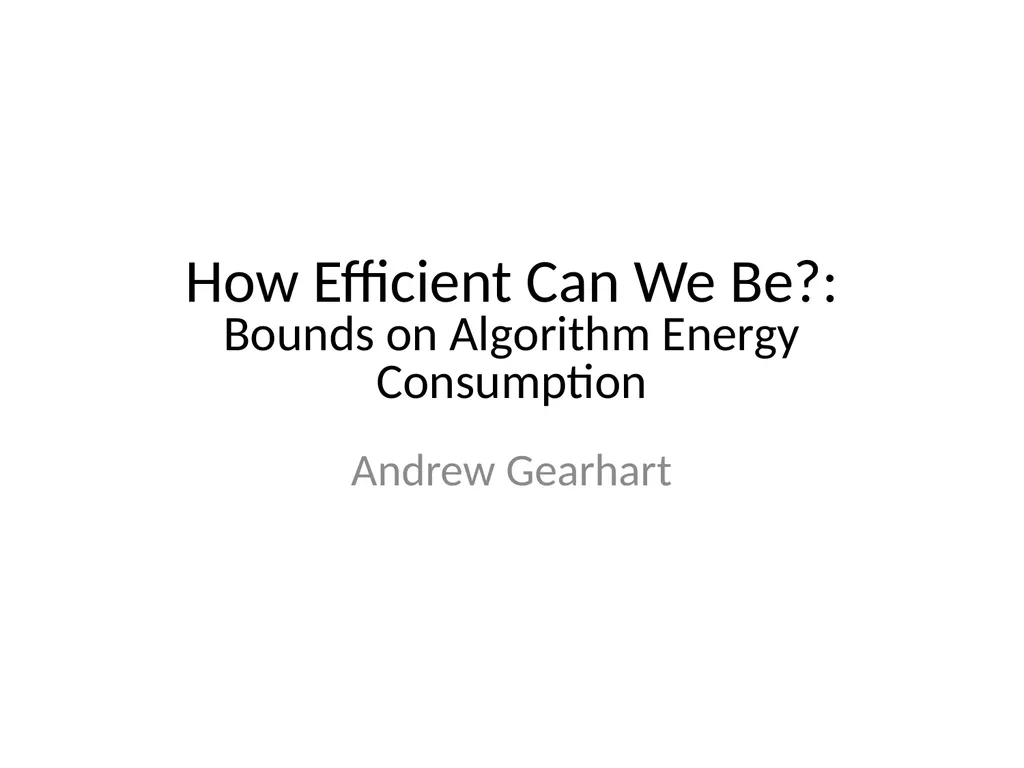
Author : karlyn-bohler | Published Date : 2025-05-10
Description: How Efficient Can We Be?: Bounds on Algorithm Energy Consumption Andrew Gearhart Relation to ASPIRE ASPIRE (Algorithms and Specializers for Provably-optimal Implementations with Resiliency and Efficiency) - recall Krstes talkDownload Presentation The PPT/PDF document "" is the property of its rightful owner. Permission is granted to download and print the materials on this website for personal, non-commercial use only, and to display it on your personal computer provided you do not modify the materials and that you retain all copyright notices contained in the materials. By downloading content from our website, you accept the terms of this agreement.
Here is the link to download the presentation.
"How Efficient Can We Be?: Bounds on Algorithm"The content belongs to its owner. You may download and print it for personal use, without modification, and keep all copyright notices. By downloading, you agree to these terms.













